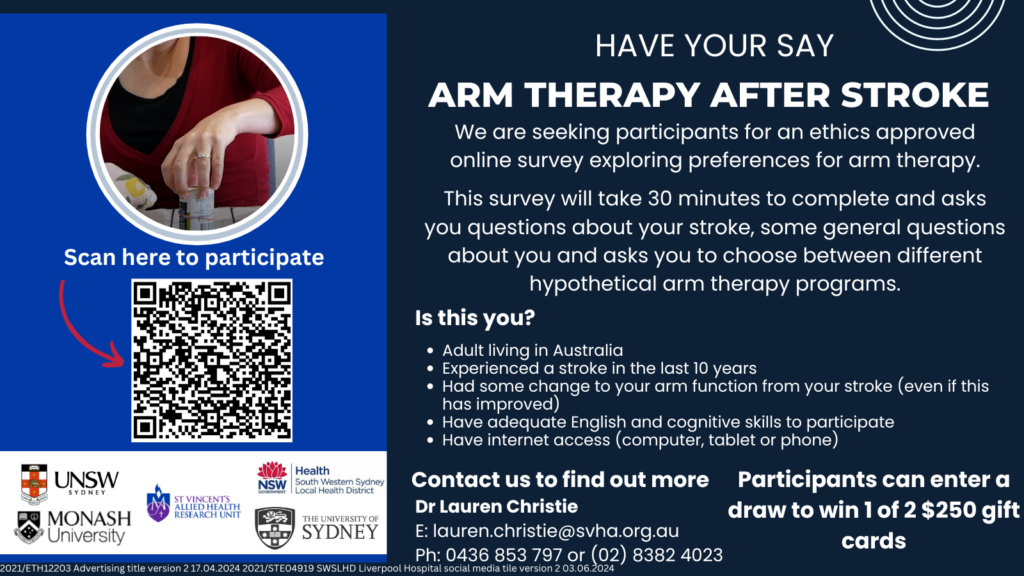Patient preferences in the delivery of constraint-induced movement therapy (CIMT) programs for upper limb recovery after Stroke
What is it?
Constraint Induced Movement Therapy (CIMT) is an effective treatment for arm recovery following Stroke and is a strongly recommended intervention in the Australian National Stroke Guidelines, routine delivery remains poor. There has been limited research exploring the acceptability of CIMT from a Stroke survivor’s perspective. We will investigate patient preferences for arm rehabilitation post Stroke using a discrete choice experiment. The findings from the study will then be able to inform the development of models of upper limb rehabilitation that meet patient preferences and maximise opportunities for uptake and adherence.
What involvement is required by each participant?
Each participant will complete an online survey which takes about 30 minutes. They will be asked about their Stroke and experience in arm therapy as well as some general questions. They will then be asked to choose between different types of hypothetical arm therapy programs.
Who can get involved?
- Experienced a Stroke in the last 10 years
- Had some change in function to your arm from your Stroke
How to get involved?

Click here to go to the online survey
For more information and to register your interest in this research study, contact:
Dr Lauren Christie | Email: lauren.christie@svha.org.au | Phone: 02 8382 4023
